In the heart of the old city of Antalya, known as Kaleici, is a mosque called Şehzade Korkut Cami, the site of a former temple. Yet, the space hosted a church three times, and now it is opened as a mosque. Let’s explore this former Byzantine church in Antalya, reconstructed as a mosque.
Former Panagia Byzantine Church
Even today, the remnants of the sixth-century Byzantine church stand as a testament to the rich religious heritage of this site. Originally dedicated to the Virgin Mary (Παναγία – Panagia), but later the Muslims called it the Kesik Minera Mosque, because of a broken minerat. The multiple names borne over the centuries reflect this location’s historical turmoil and diverse use. The first church built upon the ruins of a Roman temple in the 5th-6th century, further adds to its cultural significance.[1]It’s a Mosque now; Panhagia, Kesik Minare from Antlaya, Gamze Kaymak-Heinz, 2020, 325. The location reflects a temple built in the 2nd to 5th centuries, a church from the 5th to the 13th centuries, and a mosque during the 13th and 14th centuries. Again, a church from 1361 to nearly 1469, then a mosque from 1469 to 1896 (fire), today a restored mosque opened the site in 2020.[2]https://turkisharchaeonews.net/object/broken-minaret-antalya So the place hosted a temple once, at least twice a church, and three times a Mosque. For these reasons, the site has multiple names.
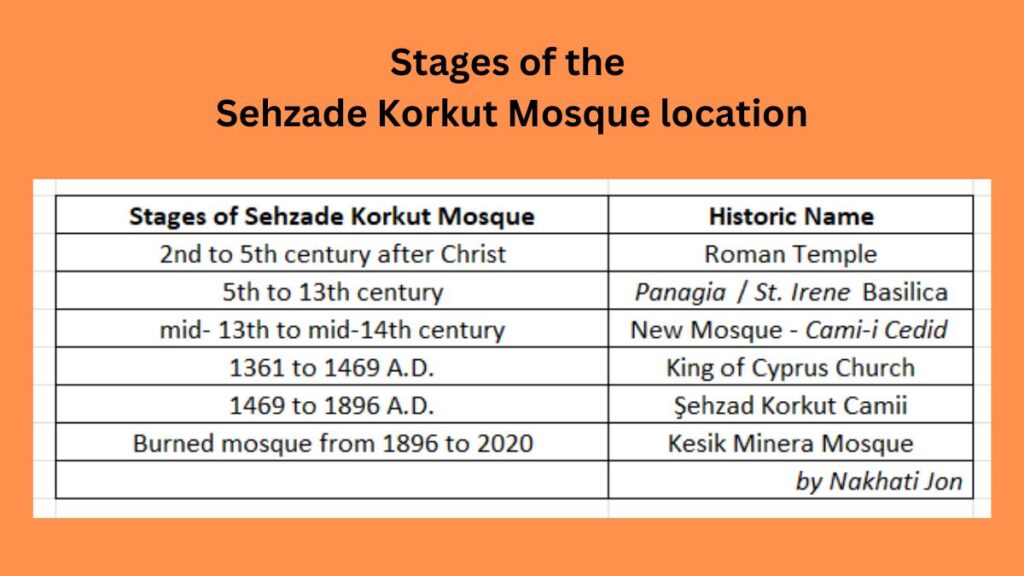
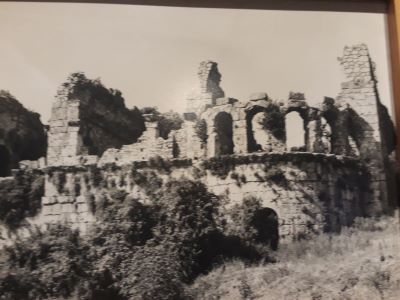
Previously the site for over 100 years remained an archaeological gated site. I first visited the area in 2006, as a gated site. Later, the building opened as a small museum, but now the third mosque is on full display.[3]this picture is from https://anamed.ku.edu.tr/en/picturing-a-lost-empire-an-italian-lens-on-byzantine-art-in-anatolia-1960-2000/
Kesik Minera Mosque
The Turkish historian Evren Dayar states an interesting thing about this place. He wrote that after becoming a mosque, a church existed there as a shared space in the late 17th and early 18th century. The change of population increased, and the neighborhood again became Greek-dominate. This would mean the location has been a church on three occasions, yet sharing the space for a bit. Soon after, it became what they called the New Mosque, a name used since the 16th century.[4]Antalya Kaleiçi Panhagia Kilisesi ve Câmi-i Cedid, Evren Dayar, 535. “Panaghia Kilisesi câmiye dönüştürüldükten sonra yaklaşık dört asır boyunca Müslümanların ibadetine açık … Continue reading The 1896 fire burned down the neighborhood from here to the Hidirlik Tower. This fire destroyed much of the building, so the site sat as the Kesik Minera (Broken Minerat) until recently.
Cross-shaped Building
When one enters the building, one enters into a cross-shaped small chapel.
After removing your shoes, you are standing in a former cross-shaped building. The main area extends from this section. The south side cross-section remains till today[5]Cumanin Cami’i at Antalya: A Byzantine Church by M. H. Ballance, https://www.jstor.org/stable/40310533., but the northern section differs. Also, when walking in, a former temple archway centers the entry.
As any Byzantine church, the direction of the church reflects the Hagia Sophia 33 degrees southeast direction to align with the sunrise of the winter solstice.[6]https://www.researchgate.net/figure/Hagia-Sophia-in-Thessaloniki-The-church-is-aligned-along-the-sunrise-on-the-winter_fig3_324670565 The ancient capitals show the heart symbol of God’s unconditional love, and the infinity symbol of eternity gives witness to God’s character. Also, many Roman acanthus designs (flowing leafy shape) depict immorality and healing—a symbol easily adopted into Byzantine structures.
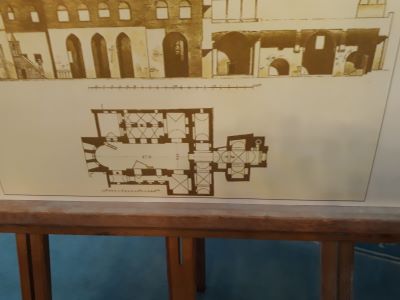
The 2022 exhibit picture shows the smaller building’s cross shape. Many suspect this portion, called a cruciform annex, was a later addition. It was most likely used as a martyrion chamber, a chamber for those who died as martyrs.[7]Cumanin Cami’i at Antalya: A Byzantine Church by M. H. Ballance, 111. https://www.jstor.org/stable/40310533.
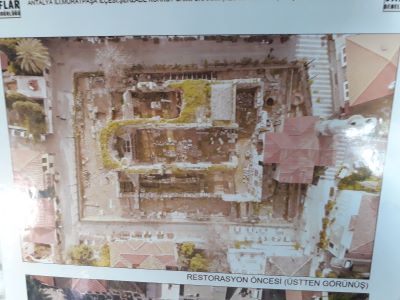
First Church Evidence
The majority of the delicate marble carvings come from the first church, built near the 6th century using elements of the former temple.
Pillars up above the front of the elevated pulpit show how delicate the first church’s decorations were. In the picture on the right, one can see on the right side, the engraved cross with the one on the left desecrated.
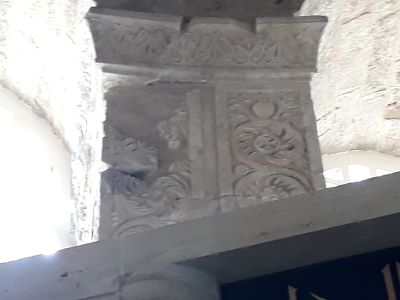
Former Byzantine Church’s Interior Crosses
On a recent tour of the place, as we walked through looking at the crosses on the pillars, one local person approached us and stated they had conquered these things of the past. He seemed to not appreciate that I was pointing out the ancient capitals that showed forth the heart symbol of God’s unconditional love and the circle infinity symbol of eternity that gives witness to the former church. Seemingly, the cross and Christian ideas still testify in this conquered place.
When you walk in, the southern area is on your right, while the northern section is on your left. The center and right side display a few hard-to-see crosses. The Byzantine churches used the southern aisle to store religious books and priestly items necessary for worship (Diaconicon). In this section, many Roman acanthus designs (flowing leafy shapes) depicted immorality and healing—symbols easily adopted into Byzantine structures.
Northern Aisle – Prothesis
On the building’s left side, many crosses are embedded in the walls, capitals, and beneath the glass flooring. Like the Hagia Sophia, the northern aisle of this former Byzantine church in Antalya is the former communion area. The Lord’s table featured the wine and bread of a believer’s communion with God, even in the capitals. A major theme of this northern area is the cross and vine imagery.
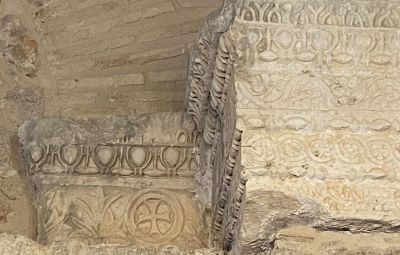
The cross capital displays at least four crosses, and other areas embed similar crosses to show the former beauty of the Byzantine church. Notice the cross intermixed with the Roman acanthus designs.
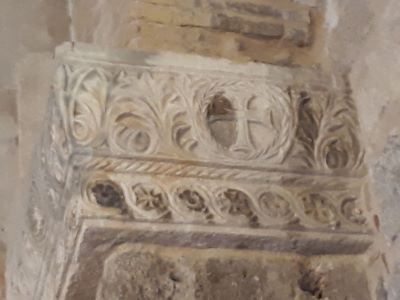
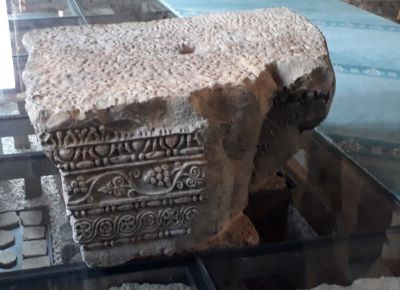
Sitting on the glass structure is an ancient capital with carved crosses interspersed with four-flowered symbols. Notice the grape symbols, which would testify to the covenant of Christ’s death. This capital was most likely near this communion section located on the north side.
Crosses below the Glass
Through the glass, many stones and pieces show proof of the past, of which two parts of a large broken cross that once dominated a hallway or some portion of the church.
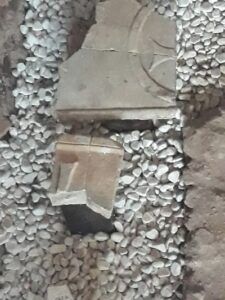
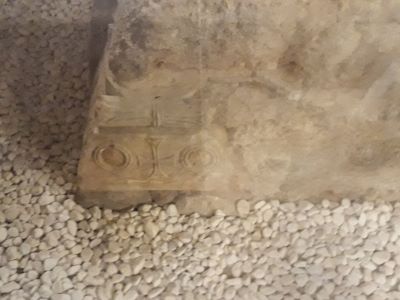
This cornerstone piece, set purposely to display a cross upside down, gives insight into how the Muslim builders treated the cross. Despite this, the depth of the lower regions most likely hosted an underground crypt or storage.
Former Byzantine Church’s Exterior Crosses
The courtyard in front portrays the former temple stone with Greek writing and many other pieces of history from the site. On the north side of the building, a cross is set in stone between the windows.

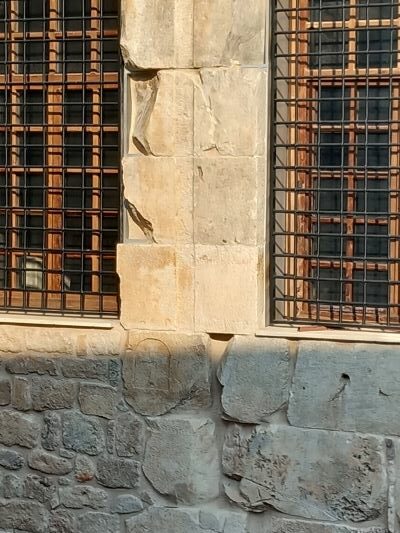
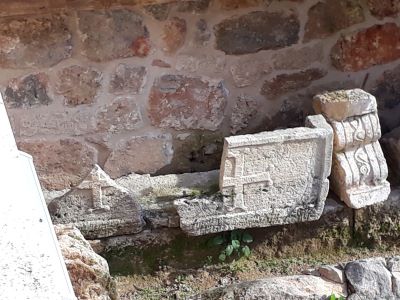
In the back courtyard, hidden from view by those who walk by, lies a broken grave. I had to climb onto the ledge of the northeastern wall to get this picture. The crosses lie under the northeast corner fence.
The Old City of Antalya (Kaleici) is a fantastic place. This former Byzantine church remains the oldest, but many other churches are nearby. Please check out my walking tour of the other Greek churches in the area.
References
| ↑1 | It’s a Mosque now; Panhagia, Kesik Minare from Antlaya, Gamze Kaymak-Heinz, 2020, 325. |
|---|---|
| ↑2 | https://turkisharchaeonews.net/object/broken-minaret-antalya |
| ↑3 | this picture is from https://anamed.ku.edu.tr/en/picturing-a-lost-empire-an-italian-lens-on-byzantine-art-in-anatolia-1960-2000/ |
| ↑4 | Antalya Kaleiçi Panhagia Kilisesi ve Câmi-i Cedid, Evren Dayar, 535. “Panaghia Kilisesi câmiye dönüştürüldükten sonra yaklaşık dört asır boyunca Müslümanların ibadetine açık kalmıştır. Fakat XVIII. yüzyılın ikinci yarısında başlayan, XIX. yüzyılda ise Kaleiçi’nin nüfus dengesini tersine çeviren bir başka dönüşümden etkilenmiştir. Bu dönüşümün ilk aşamasında kentteki Rum nüfusun sayısı artmış ve gayrimüslimler tekrar Kaleiçi’nin hâkim topluluğu olmuş; ikinci aşamasında ise Câmi-i Cedid cemaatsiz kalmış ve bir dizi talihsiz olayın da etkisiyle bütünüyle terk edilmiştir.” |
| ↑5 | Cumanin Cami’i at Antalya: A Byzantine Church by M. H. Ballance, https://www.jstor.org/stable/40310533. |
| ↑6 | https://www.researchgate.net/figure/Hagia-Sophia-in-Thessaloniki-The-church-is-aligned-along-the-sunrise-on-the-winter_fig3_324670565 |
| ↑7 | Cumanin Cami’i at Antalya: A Byzantine Church by M. H. Ballance, 111. https://www.jstor.org/stable/40310533. |
[…] Former Byzantine Church in Antalya […]